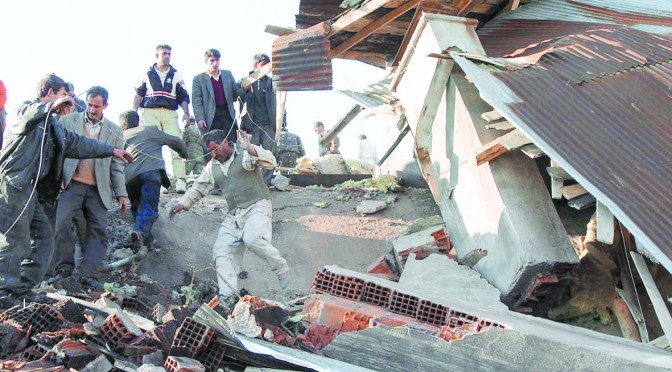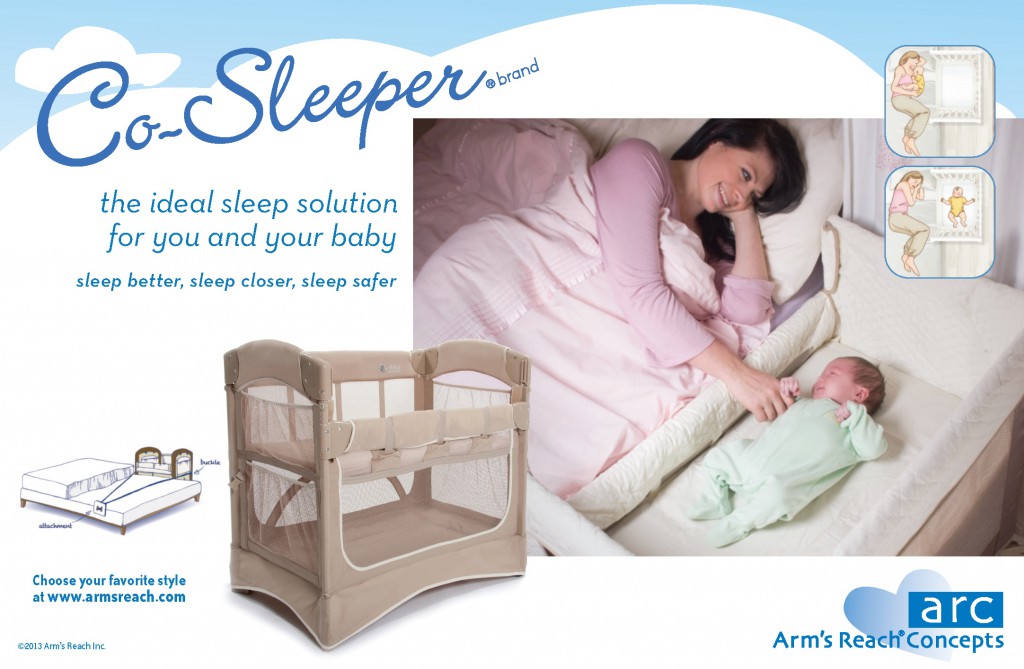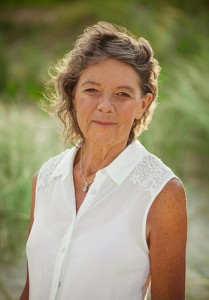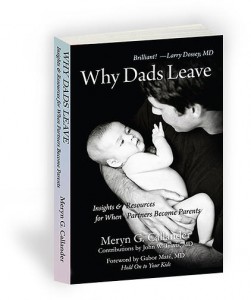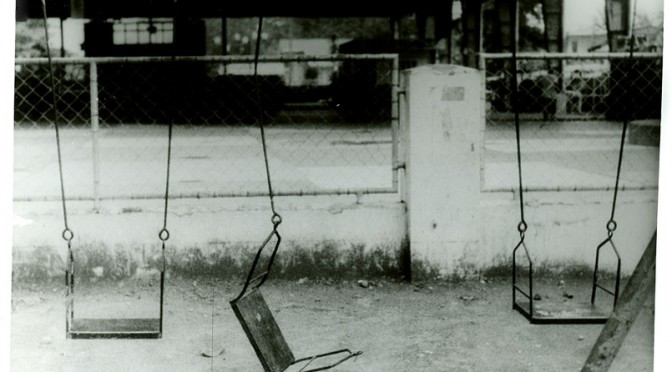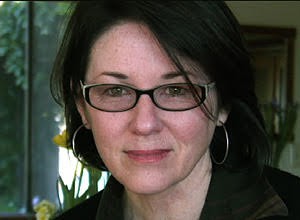I am always excited to meet with fellow journalists who, like me, were so moved by their experience as a parent — and in supporting other parents — that they transformed their great talents and dedication to truth into a passion of uncovering the story of Attachment Parenting.
About the Interviewer: Rita Brhel, CLC, API Leader, is the Publications Coordinator and Managing Editor for Attachment Parenting International (API). She lives at the edge of Fairfield, Nebraska, USA, with her husband and their 3 children, on a sustainable farm. Rita is also a freelance writer and a WIC Breastfeeding Peer Counselor.
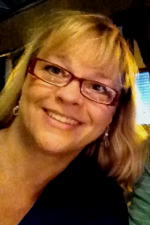 Among the newest members of API’s Resource Advisory Council, Lisa Reagan of Toano, Virginia, USA, is one such journalist. She has made amazing strides during the last 17 years to further the AP movement through her nonprofit activism as Executive Editor of Kindred Media and Community, her cofounding of Families for Conscious Living (FCL), and her latest work with birth psychology through the Association for Prenatal and Perinatal Psychology and Health.
Among the newest members of API’s Resource Advisory Council, Lisa Reagan of Toano, Virginia, USA, is one such journalist. She has made amazing strides during the last 17 years to further the AP movement through her nonprofit activism as Executive Editor of Kindred Media and Community, her cofounding of Families for Conscious Living (FCL), and her latest work with birth psychology through the Association for Prenatal and Perinatal Psychology and Health.
I am thrilled to be able to share this interview with Lisa — for you to be able to get to know her and the amazing person she is!
API: I love getting to know people and learning about how they came to be where they are at in their life. Lisa, you have so much going on and you have so much influence. I want to know how that came to be and what inspired you?
LISA: My path of advocacy for conscious parenting began with the birth of my son in 1997. I had a highly medicalized birth, and did not know about natural birth or Attachment Parenting. But a woman I met in a Lamaze class told me about a support group that was meeting in a park that talked about the sorts of topics found in Mothering magazine, which I loved and read throughout my pregnancy. This group also found resources for healthy living, like trucking in organic food through co-ops and finding midwives — they were illegal — and the rare books on compassionate parenting.
Learn the story of Mothering magazine through this API interview with former editor Peggy O’Mara.
I remember passing around [API Advisory Board member] Dr. [William] Sears’ book [The Baby Book] and discussing it together. All of his insights resonated with what our hearts as mothers wanted. That, and it just seemed like the most common sense thing in the world: to pick up your crying baby, eat healthy food and discover ways to contribute to a healthy planet for our families.
Listen to Dr. William Sears in this API teleseminar, “Needs vs Wants: How to fulfill a child’s needs, yet discern his wants in a way that preserves healthy attachment.”
So my conscious parenting adventure began with this invitation to attend the support group of an underground homebirth community. Hundreds of families around the state belonged to it, as it was the group’s midwife that admonished the parents to rely on each other. She understood that parents needed supportive community to make counter-culture wellness choices.
API: Yes, that’s what Attachment Parenting International (API) is all about — parent-to-parent support, preferably face-to-face with our local API Support Groups and API Leaders.
LISA: API families are very lucky to be able to easily find each other today on the Internet! I cannot say enough about the necessity to gather in person, though. There are non-verbal and even quantum fields of wisdom that are exchanged when we simply gather together. Really.
During my new motherhood, it wasn’t just book information we craved. We discovered we needed to share the practical information from our personal experiences. If one of us had a colicky child and figured out something that works, we needed to share it with our group. We kept a list of “Mentoring Moms,” so we would know who to refer to for allergies, breastfeeding challenges and so on. This is a practical reason for getting together in community, in-personal support and sharing.
It took a while for reality to sink in, but once I understood our pursuit of wellness was not culturally supported, I was depressed. Most activists are in the beginning. So, I had to overcome a lot of frustration and confusion. Today, we know about birth psychology and how womb ecology becomes world ecology. The insights into the holistic wellness paradigm are becoming more clear, scientifically, every day.
Back then, it was the very early days of the Internet. We did not just pop on and read 100 mommy blogs about people’s experiences with conscious parenting. We also lived in an oppressive part of the United States, where parents could still be jailed or their children taken away for homeschooling or homebirthing.
I didn’t find out for years that my confusion and angst emanated from what Joseph Chilton Pearce [author of Magical Child] called the “bio-cultural conflict.” My biological imperatives to care for my child — responsive parenting, breastfeeding, cosleeping — were at odds with cultural imperative to conform to industrial food, education and child-raising methods, which turned out to be brain-damaging.
Review research about how popular child-rearing techniques can hinder brain development, from API Board of Directors member Darcia Narvaez, psychology professor at Notre Dame University.
This was only 17 years ago. I mean, really, it is unreal how in 17 years, things have taken off — and in a good way.
But in 1999, the group’s midwife was literally run out of the state, and the group fell apart — this tragedy was documented in the book Pushing for Midwives: Homebirth Mothers and the Reproductive Rights Movement by sociologist Crista Craven. The people who were part of this underground homebirth movement knew her and loved her. I did not know her, so I said I need to keep this going. I remember driving to the park one day and nobody was there, because everybody that had been a part of this — and I mean dozens of families would show up for these meetings — they were so devastated by losing the heart of their organization that they did not want to go forward. I remember looking at the empty picnic tables and just sitting down and crying.
I needed my community biologically, neurologically, emotionally, spiritually on every level. I had to have this community. I asked a couple of people to please just stay with me as I wanted to transition what they were doing into daylight. I wanted to do more workshops and educational programs and conferences, and I wanted to work with universities.
We had excellent relationships with the Women Studies departments at a couple of universities that worked with us to have birth options conferences as midwifery was illegal in Virginia, USA. FCL produced the first performance of the play “Birth” by Karen Brody in 2005 in celebration of the eventual legalization of midwifery in Virginia. One university’s science research society worked with us on holding a conference on the mosquito spraying, which was so prevalent in our area. So we found allies right away in a lot of mainstream places that supported our ideas.
API: When you refer to mainstream, you mean that compassionate parenting — Attachment Parenting — was seen as alternative?
LISA: Yes. People like to label and stereotype. But the “Oh, you guys are crunchy, granola hippies” label — we were not. Most of us weren’t at all. There were some people who were into that as a lifestyle, but for the most part, it was just regular parents who were questioning and weren’t even aware of what they were questioning — or pioneering — at the time.
So my path as a newborn activist led me to explore this very, very core piece of, “Why am I not supported as a mother? Why can’t I find what I need? Why is this so hard?” I couldn’t even name “it” for a long while because I was trying to grasp the meta-view of an emerging holistic wellness paradigm. Our worldviews — our stories — are the context of our lives, within us and all around us, but often seem invisible to us. Having my community gave me confidence to trust myself and my intuition to ask questions. It was also Joseph Chilton Pearce, who lived in Virginia and spoke to our group, who pointed the way for my investigation into human consciousness, the connections between how we treat children and how they grow up to treat each other and the world.
Eventually, I found the Institute of Noetic Sciences (IONS) in California, USA, who had been studying the issue of transforming human consciousness for 40 years. Their scientific research and reports helped to form questions that people had not asked before, and are still forming. IONS was founded by the sixth man to walk on the moon, Edgar Mitchell, who experienced a profound shift in his own consciousness while in space. IONS’ current president, Cassandra Vieten, PhD, wrote the book Mindful Motherhood. Think about that for a minute: astronauts and mindful mothering.
 Some researchers believe the current consciousness shift towards holism began the moment NASA astronauts sent photos of the Earth to us. For the first time — looking at this famous photo called “the
Some researchers believe the current consciousness shift towards holism began the moment NASA astronauts sent photos of the Earth to us. For the first time — looking at this famous photo called “the
Blue Marble” — we started to think about how we are living on this finite planet. Before this photo and its shocking revelation of our smallness in the vast universe, we were acting like our resources — both people and planetary — are disposable, like we can just use it all up and throw it away, pile up the trash, pollute our water and it will be okay. The Blue Marble revelation inspired the celebration of the first Earth Day, and that was in 1970.
RITA: Yes, recognizing our place in the universe.
LISA: A fairly new concept, especially applied to children.
Twenty-eight years later, I found myself sitting in a park with mothers and fathers 7 miles from NASA Langley Research Center exploring the possibilities of “conscious family living” as a way to bring sustainability and wellness to ourselves, our children, communities and planet. What we know now — and new science emerges every day to deepen this understanding — is that all of life is connected and all of life is conscious at some level.
Attachment science shows the way to sustainability through creating connected children who grow into connected adults. API, and especially [API Cofounders] Lysa Parker and Barbara Nicholson’s book Attached at the Heart, provide the perfect road map for parents who crave connection to their children. I am very proud to have known them from the beginning of my journey and very honored to work with API’s Resource Advisory Council.
Learn how Attachment Parenting dovetails with sustainability in this API article by Lysa Parker.
RITA: And API is grateful to have you as part of the team to further the Attachment Parenting movement and support families! What happened next?
LISA: Following Earth Day, an Eco-Green-Sustainability movement was born. But what we don’t appreciate now and we need to appreciate is that this is a consciousness-raising movement.
Nobody knows what they are doing. I asked Pearce in his home in 2013 to help me with the language to describe what is happening and he said there are many great minds in the world who are struggling with this limitation of language. This is a new story, so there will need to be new language, and that will come out of our experiences of living into and being this new story.
So a couple of years after that first Earth Day, you have [API Advisory Board member] Peggy O’Mara pioneer Mothering magazine. She told me she was impacted by both the Vietnam War and this return to the land and sustainability movement. Peggy is a consciousness-raising pioneer. Peggy took Mothering and connected dots between how we raise children impacts how we treat the world.
Listen to Peggy O’Mara’s words of wisdom through this API teleseminar, “Getting Real with Ourselves — and Our Kids.”
When I was with my FCL group — and this was 20 years after Peggy created Mothering — and we started reading Mothering magazine together, I remember thinking, ‘I have to talk to Peggy O’Mara. I just need to.’ As a journalist, I wanted to write for her. I wanted to do whatever I can do. I still couldn’t intellectually articulate what was happening — that I was participating in a consciousness-raising movement — but my heart, gut and DNA had to be a part of Mothering‘s vision for families. I became the East Coast Contributing Editor for Mothering.
It is challenging, even today, to inspire people to consider this 40,000-foot view, the understanding of conscious parenting as a consciousness-raising movement with far-reaching consequences for our human family. Some people I talk with say, “Oh, I can’t go there. I don’t even understand what you are saying.” And some days, I can’t go there and have no idea what I’m talking about, ha.
But when we have context for what is happening within us and around us, when we have some kind of historical context, cultural context, even our own personal context, it is the context — the Big Picture — that can help us to shake off despondency and move toward empowerment and joy. And early on, this is what I saw in myself, a new mother who was unaware that my conscious choices for connection — with myself, my child, my husband, my community and planet — mattered.
API: I think that can be difficult for some people to do, to see themselves in that way. It takes a different way of thinking.
LISA: Yes, it does. But the effort to shift our awareness is worth it. When AP families are gathering, they are addressing this need for culture to reform by being the change that is needed. This is consciousness-raising, and when we have this big of a picture and then we see where we are in it, it becomes very exciting and naturally empowering. In Families for Conscious Living, even though we did not know what the heck we were doing — we were definitely feeling around in the dark — we wanted to talk about everything, from attachment science to Pearce to trucking in organic food through co-ops.
Originally, we were Families for Natural Living, but eventually we realized the word “natural” was all over products in Wal-Mart and had lost its intention — again, the need for considering new language. So the word “conscious” was adopted to reflect our understanding that our inner world created our outer world, and it is this early foundation in pregnancy, birth and attachment science that set us up for relationships with ourselves, others and life — the Blue Marble.
API: Attachment Parenting (AP) allows parents the freedom to start questioning everything, to open up their way of thinking and doing, to explore what they didn’t know could be explored before. API Support Groups can be very empowering experiences for parents. So when did you cofound FCL?
LISA: Yes, with AP groups, once you start questioning — once you recognize it is going to be healthier for your family to make counter culture choices — you can get on a roll, ha.
 Families for Conscious Living, the name and the organization, came out of the underground homebirth community. The underground homebirth community was around in the mid-1990s, and then the formalized process of becoming a nonprofit was 1998.
Families for Conscious Living, the name and the organization, came out of the underground homebirth community. The underground homebirth community was around in the mid-1990s, and then the formalized process of becoming a nonprofit was 1998.
API: And what kind of topics did you cover in your FCL groups?
LISA: We said, “Talk about whatever you want to talk about, but we are here is to try to understand and support each other in wellness. We don’t want to define what that is, because we think that’s the industrial model: the prescriptive, ‘let me tell you how to do this’ kind of way.”
API: As with API, we ultimately want to lead parents back to themselves, to getting in touch and listening to their instincts of how to relate to their children and to themselves. We want to offer guidelines of how to do that, but empowering ourselves means being confident in trusting our instincts.
LISA: We wanted to explore it all, but together. So FCL groups were about that, exploring this wellness paradigm, the holistic paradigm, attachment science, breastfeeding, childbirth, education, our own
intuitions and, even back then, the neuroscience that is currently exploding.
What is happening now is the gap between attachment science, epigenetics, neuroscience and sustainability is closing. Leading the way has been the Association for Prenatal and Perinatal Psychology and Health (APPPAH) whose founders began presenting birth psychology to an unreceptive academia and public 35 years ago.
Kindred’s slogan used to be “Because Sustainability Begins With Conception,” but we took that phrase down when the magazine came to the United States as an FCL alternative media initiative from Australia, as Americans were nowhere near being able to digest that meta-view. But now, just 5 years later, there is a new documentary, “In Utero,” featuring APPPAH’s founder, Thomas Verny, MD, who presents the case, with international experts, in the film for how womb ecology becomes world ecology.
Kathleen and Stephen Gyllenhaal — yes they are parents, father and step mother, of [actor] Jake Gyllenhaal and [actress] Maggie Gyllenhaal — have created this documentary, and I have previewed it. This film is going to be an impactful consciousness-raising tool for activists and professionals. It beautifully connects the dots between
conception, pregnancy, the mother’s emotional wellness, the lack or presence of support during gestation for mother and child, and how we’re set up for connection before our births. It is a stunning work, and the DVD cover shows a green version of the Blue Marble photo with a baby inside.
So birth psychology shows that human consciousness begins at the beginning. This a huge shift, one that will take another 35 years to be reflected in our culture, even though I hope this isn’t true.
The holistic worldview that is emerging now understands there is no separation of our lives into cubicles, categories, subjects or tidy compartments, as the industrial worldview and mainstream education has trained us to believe. We’re now witnessing the emergence of science that confirms life is all connected and conscious. It is a continuum. Our personal choices effect the whole.
API: I can see why — it being a continuum — this would be so, why it would take 40 years to get to a place where we can look back and understand what has been happening and how families and parenting fit in. What happened to FCL’s groups?
LISA: In the end, we had 80 community groups in the United States and England, but I couldn’t get the funding or staff that I needed to run it and was burning out trying to keep it going. In the late 2000s, I started volunteering for Pathways to Family Wellness magazine, which is run by the International Chiropractic Pediatric Association (ICPA). Over the course of a few years of volunteering, what we realized that they have a model in place for helping parents form support groups. The ICPA version of FCL allowed the chiropractor be the sponsor of the group, which took the burden off of the parent to form and facilitate a support group.
It became obvious that I could take the gathering guide that I had written for the Families for Conscious Living groups and translate it into a very abbreviated version for the chiropractors and parents to use to create these groups. So we did that in 2009, and by the time I left Pathways two years ago, they had more than 300 groups internationally.
It is a big international organization with professional dues supporting their programs. That model is a great model. It does have some drawbacks in that not all parents are supportive of chiropractic or they don’t want to feel that they are pressured into chiropractic care by going into a chiropractor’s office, but there were plenty of people who do get it and love it, and it was a very turnkey program to be able to walk in and have this piece.
Over the years of experimenting with what works for parent support groups, I would call and talk to Barbara and Lysa and say, “How are you doing this?” We would share notes, knowing that Attachment Parenting International is unique in their approach and solid resources.
I love Lysa and Barbara. I absolutely love them. They are just so grounded. They are very grounded and intelligent people. I am very grateful to them for still being here 21 years later. I am just so glad they were able to weather all of the early years as an organization, because their role in his conscious parenting movement is historical and foundation for what comes next.
API: I love that.
LISA: It’s huge. It’s as big as it gets.
I wasn’t thinking about any of this big picture stuff when I had a child. I wasn’t. I just wanted to be a mom. I loved my baby, and I loved my husband and I was so grateful that I got to delay having a child until I could stay home.
But I, like many parents, began to question and felt there was something not right about a culture that did not support family wellness — going back to what Pearce calls the bio-cultural conflict, meaning we are torn between our biological imperatives to make wellness choices for our children, and our cultural imperatives for approval and acceptance.
API: Becoming a parent can be so transformative. How many children do you have?
LISA: I just have the one and he’s 17 now. I was telling some of my friends who would understand what am I saying without any kind of cultural mommy judgment — people who understand attachment and know me — and I said, “You know what? I feel like, it’s over — in a good way, though. I kind of feel like, ‘Oh my gosh, that mommy phase is over, and I have a young man in front of me.'”
Pearce says you know you’ve done your job when they walk away and don’t look back. And when he [my son] does that to me now as a teenager, I am thrilled. I am, like, great!
I know when you have little ones, it is hard to imagine that this moment will come, but I told some of my friends that, and they said, “You know, you went through your developmental milestones as a mother, too.” So I grew up as well.
API: What a good way to say it.
LISA: And they’re right. Because of following the attachment model, I got my needs met to mother him, and there is nothing hanging on now. I did it. I met my needs to be his mother and I met his needs, and it’s a completed thing now.
It is kind of a dangerous thing to say in our judgmental culture where people want to bash the heck out of moms for any reason at all, like, “Oh, aren’t I a neurotic clingy mom, especially coming from an attachment background?” The opposite could not be more true.
In fact, as Robin Grille [author of Parenting for a Peaceful World] has shared with me, the helicopter parenting phenomenon is the polar opposite of Attachment Parenting, which recognizes and respects the child’s developmental needs, not the parent’s need for control and dominance.
Listen to Robin Grille in this API teleseminar, “Peaceful Parenting: Understanding our children’s emotional needs, parents moving societies toward peace.”
I recommend that parents who can’t believe their children are ever going to grow up and leave — and you’re going to be thrilled to watch them fly out of the nest — to read John Breeding’s book Leaving Home. He is dead on right. It is harder for us than it is for them, because their whole job is to grow up and leave, but there is a way for us to meet our own needs in this process because we are growing as well and we are developing. That was a revelation.
API: I love how you say that we, as parents, are growing as well, that we are hitting our own milestones. I think there are so many people — myself included at a point — that think that you grow and then basically you are fully developed, that you are done, and then you become a mother. Really for me and for a lot of AP parents, we figure out that there is a whole lot more to go. That realization is really profound, though it is really simple if you think about it.
LISA: Well, it is a part of what has happened with this consciousness-raising movement that is moving us toward holism, which includes exploring our inner world through mindfulness. There is a whole section in Lysa and Barbara’s book Attached at the Heart on balance, and it is touching on this awareness of your inner world. There are a lot of ways to say that, but what we know is that a parent who is self-aware and self-regulating is the best gift that you are ever going to give a child ever as a model.
Learn more about Balance as one of API’s Eight Principles of Parenting.
Without mindfulness — inner exploration — we unconsciously pass down patterns of behavior and conditioning. This is inner work now is a very crucial part of conscious parenting. In fact, Michael Mendizza, who wrote Magical Parent, Magical Child, says we have to put the focus on ourselves.
Michael and Pearce bring to conscious parenting the belief that play as the most important part of our development as an adult and a child. When you learn to properly play — properly, meaning not to have someone tell you what the rules are, but really letting go and letting your imagination explore — when you learn to play as a child, you learn to play as an adult.
Learn more about the importance of play from Dr. Larry Cohen, author of Playful Parenting, in this API teleseminar, “Playful Parenting: How to lighten up your parenting because it’s fun, loving and effective!”
So, while the big picture can feel overwhelming, the industrial paradigm would have us believe we have to get it — to be experts, to perform and evaluate ourselves. Opting to move into mindfulness, curiosity and playfulness allows us to make room for what is arising with compassion, whether in ourselves or our children. There is so much freedom waiting for parents who are able to and interested in sinking into this conscious parenting movement.
API: You have mentioned so many people who have inspired you, but I want to know more about your partnership with Robin Grille.
LISA: The cool thing about Robin is that he was there with Kindred and Kelly Wendorf, Kindred‘s founder, from the beginning, and he helped to write Kindred’s Childhood Well-Being Manifesto.
As a practicing psychotherapist, he works with families who are shifting and wanting to consciously parent. He is able to be a compassionate champion for parents who take this on and help them to understand their day-to-day challenges of being present and just being with your child. His second book, Heart-to-Heart Parenting, articulates the emotional intelligence and connection paths for families. I am very happy to have Robin as our Australian Contributing Editor for Kindred.
But it is also his work that shows us the truth about the conscious parenting movement, something American parents especially are reluctant to acknowledge for a variety of reasons. The truth is, the conscious parenting movement is the flip side of human rights for children.
In the United States, it is so hard for us to get our minds around this because of how it sounds. I’ve heard people say, “Oh, it’s some liberal hippy [stuff].” Well, I am here to tell you, and Robin will, too: The end result, the other side of conscious parenting, is that we are recognizing and honoring the rights of children.
In other countries around the world — and this is what Robin was presenting in his Parenting for a Peaceful World tour in the United States in 2013 — what he is helping us to understand is not just the psychosocial history of parenting, but where we are right now. We can’t really see this in the United States. We can’t see it for ourselves, because we don’t have anything to compare it to.
We can’t, for example, imagine, like [API Resource Advisory Council member] Kathy Kendall-Tackett says, that north of us [in Canada], they get 6 months off minimally when they have a baby. She even said that Americans cannot even imagine what support looks like, really. We really cannot even imagine it, because we have not seen it and we have not experienced it. So we don’t really even know what to ask for and demand.
Listen to Dr. Kathy Kendall-Tackett in this API teleseminar, “Making Sense of Parental Depression: I adore my kids, so why am I so unhappy?”
When we move into this arena of politics, people are like, “Oh, I don’t want to talk about that. I don’t want to go.” Well, you’re already there, and this what Robin points out in his work: that unless you’re staying in bed all day, when you get out of bed, the choices that you make are political choices.
There are plenty of days where I don’t want to hear about any of this stuff. I just don’t want to talk about it. I want to go play in my garden or have dinner with my family and just forget about all of it. But what Robin presents is this very wise, compassionate, practical insight is that we are participating in our culture whether we like it or not. We are participating in public policy every day of our lives. We participate in public policy whether we go to our nation’s capital or our state legislature’s office and ask for this. It doesn’t matter. We are still participating in public policy, because public policy is set and it is enforced on us. If you read [API Advisory Board member] James McKenna’s work on cosleeping, he addresses this beautifully: the civil rights of parents to choose to co-sleep. It is a civil right.
Listen to Dr. James McKenna in this API teleseminar, “Settling the Cosleeping Controversy: Get the facts about cosleeping, SIDS, bedsharing and breastfeeding.”
So here we are, and I forget how many countries around the world have already adopted the rights of the child platform, but the United States is not one. We are one of the only developed countries that also does not have a family leave act either, for example. And in my own state of Virginia, just this year, a law was passed to protect mothers breastfeeding in public.
The public policy place is where a lot of people really shut down and say, “I can’t go there.” It is hard for us to question public policy and to get in there and say this has not served me and my family and I want this to change. It is because we are butting up against our own conditioning. We probably weren’t raised to question authority, to say this doesn’t meet my need or serve humanity and now I’m going to have to work with other people to help change this so that it does.
Barbara and Lysa touched on this idea in Attached at the Heart in the Balance chapter: learning to ask and expect to get what you are asking for, have the expectation that you deserve support and that you deserve to be supported and you deserve to be heard. You have the right to these things. These are human rights.
Sign up for the next training to become an Attached at the Heart Parent Educator
API: Thank you so much, Lisa, for your time and insights. You’ve done amazing things for the Attachment Parenting movement, and you have done some really great things of bringing people together and bringing parents together. Is there anything else you’d like to share?
LISA: I am very excited and grateful to share my “mother (of a) quest” story, as I call it, ha. I love exploring our new story at Kindred, because it’s our story that shapes our worldview, our capacity for big picture adventures.
Joseph Campbell [author of The Power of Myth] says we are the heroes of our own journey. I think this is true and the best model of empowerment we can provide for our children who are set to inherit a volatile world.
API parents are heroes on a conscious parenting journey. Whether they see themselves that way or not, history will.
*****
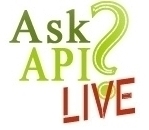
with Kim John Payne on “Simplicity Parenting”
audio recording now available
“Imagine your life…with a sense of ease as you begin to limit distractions and say ‘no’ to too much, too fast, too soon. Today’s busier, faster, supersized society is waging an undeclared war…on childhood.” ~Kim John Payne, author of Simplicity Parenting
Purchase now to listen in as Attachment Parenting International (API) Cofounder and coauthor of Attached at the Heart Barbara Nicholson and parenting author and speaker Lu Hanessian discuss simplicity parenting with world-renowned author Kim John Payne.
This API Live teleseminar is part of API’s 2015 Attachment Parenting Month celebration — with the theme of “Parental Presence: Birthing Families, Strengthening Society” — helping families put in practice what we know is critical for investing in early secure attachment. Our lives cannot be too busy for our children.
 Kim John Payne, M.Ed, is the author of the #1 best-selling book, Simplicity Parenting, in which he outlines a simple, orderly and effective pathway to simplify 4 realms at home — environment, rhythm, scheduling and unplugging — to reduce stress on children and their parents, and allow room for connection, creativity and relaxation.
Kim John Payne, M.Ed, is the author of the #1 best-selling book, Simplicity Parenting, in which he outlines a simple, orderly and effective pathway to simplify 4 realms at home — environment, rhythm, scheduling and unplugging — to reduce stress on children and their parents, and allow room for connection, creativity and relaxation.
Kim John Payne’s message helps families recognize the importance of parental presence, even more so in this day and age when so many pressures are taking the focus away from connected parenting. By listening to Kim John Payne’s teleseminar you’ll walk away with a renewed focus for yourself and your family.
Purchase today!
